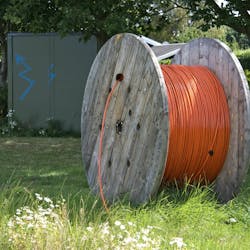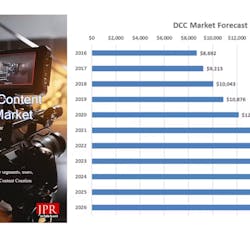| [SWF]http://broadbandtechreport.com/wp-content/uploads/2010/08/1-banner.swf, 250, 205[/SWF] |
In addition to coming to grips with bandwidth limitations and a current dearth of programming, the industry is only at the beginning of the standardization process. Dr. Stefan Winkler, the chief scientist at Cheetah Technologies (www.cheetahtech.com), said that cable operators' initiatives still are in the experimental stages. He explained that ops are experimenting with various approaches and determining how well they coexist or conflict with other elements of their operations. "A lot of issues still have to be solved," he said. "Operators have to test in their environments and see if it interoperates with the equipment they have."
No Slam Dunk
For 3D to become a major cable play, certain things likely must happen. At least one of these elements -- inclusion of 3D circuitry in more televisions -- is not directly under the control of the cable industry (though operators' success or failure in 3D will impact set makers' plans). More directly within cable's control is settling on standards and creation of an end-to-end ecosystem. The ecosystem includes gear for processing and distributing the video, inserting ads, branding content, multiplexing and de-multiplexing signals with 2D video and other elements, wrote Ramin Farassat, the VP of product marketing and business development for RGB Networks (www.rgbnetworks.com) in response to emailed questions.A milestone on the road to proactively addressing these issues came with the release of specifications. On September 1, CableLabs (www.cablelabs.com) released the Content Encoding Profiles 3.0 Specification. 3D uses two images -- stereoscopy -- to create the illusion of depth. The CableLabs spec tells content creators, operators and the rest of the ecosystem how to do this when the images are at the left and right or at the top and bottom of the frame.According to Farassat, the outstanding questions addressed by the CableLabs' specification focus on, among other things, bit rates, video/audio formats metadata specs, frame rates and closed captioning. "The CableLabs specifications address these and provide the guidelines for content providers to create the content appropriately, and for cable systems to adequately deliver this content," he wrote.It has repeatedly been proven that the industry works best when it draws from the same technical playbook, and the encoding specs are designed to use this approach to drive efficiency, David Broberg, CableLab's VP of consumer video technology, said. "Part of the problem with delivery today with a lack of a standard is that there is a wide range of implementations in use," he explained. "In order to accommodate them, more bandwidth is thrown at the problem instead of addressing the issues on the formatting side. This clarifies the ambiguities on formatting to get bandwidth to where it should be."This is, quite naturally, an extremely complex topic. One example is pixel grid alignment. Broberg said that the requirement that a 3D channel fit snuggly into a 6 MHz channel using 2D HDTV as a base reference point means that about half of the data must be removed. "When you reduce the number of pixels to half, the result is that you need to know how to reconstruct the picture so that the pixels don't shift. It's a detail, but it is important," Broberg said.There are two interrelated issues at play here. Broberg is referring to how best to paste the signal back together after the data is removed, which is a purely technical exercise. The other question is more subjective: What is the cost of taking out that data in terms of subscribers' perception? The worst possible outcome of the industry's overall 3D initiative is to expend the effort and investment -- and disappoint subscribers.Though preserving adequate quality is a key concern, it may only be a temporary one. Approaches to transmitting full 3D signals within the parameters of today's cable network are being discussed, said Roland Vlaicu, the director of technical marketing in the Broadcast Group at Dolby Laboratories (www.dolby.com).Vlaicu said that the specification's approach of facilitating the transmission of 3D content in which the duplicate image is over and under or left and right in the bandwidth currently carrying 2D HD images has two significant advantages. "It allows 3D to roll out quickly and it allows cable programmers and operators to continue to use equipment in the headend and in set-top boxes without modification," he said.







